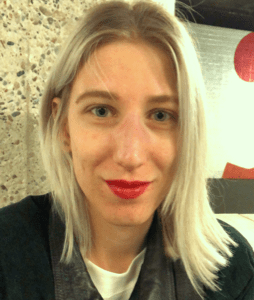Lohmann Group
Synapse development, spontaneous activity, autism

Synapse development, spontaneous activity, autism
The development of specific synaptic connections between nerve cells is a fundamental step during the maturation of the brain, but its underlying mechanisms are largely unknown. To investigate how neurons establish specific connections, we apply high resolution imaging and electrophysiology in brain slices and in vivo.
Our goal is to identify patterns of neuronal activity, forms of calcium signaling and molecular factors that regulate synapse development. We focus on the local regulation of synapse maturation and its relationship with activity patterns in the entire cell and the emerging network.
We are able to distinguish faces from objects before we have ever learned it. How can this be?
‘That is a huge mystery! What is the equivalent of an experience that can shape a brain that itself has not had any experiences? That is the question we are trying to answer. To this end we study slices of brain tissue and we also look inside the brains of new-born mice. They are ideal for this research because they do not open their eyes until two weeks after birth. During those two weeks, the same things happen in baby mice that happen in human babies just before they are born.
‘So mice are blind when they are born, but their visual brain is active. In the mouse brain we can see where this activity is coming from and which parts of the brain are involved.’
So what happens exactly?
‘We see spontaneous activity in the retina and in the brain that cannot possibly be based on earlier experiences, because there has been no visual input from the outside world. At the same time this activity is not random, because we see patterns. But how is that possible?
‘It looks like this spontaneous activity is based on evolutionary knowledge, which the visual cortex uses to ‘train’ for when actual vision kicks in. When researchers block or change this spontaneous activity in the retina, it affects the wiring of the brain, and particularly that of the visual system. If that process goes well, then babies are, thanks to this training, able to recognize visual structures such as faces, and they can also fairly quickly distinguish specific faces, such as their mother’s, from those of others.’
Baby mice also know right from the start that they must fear birds of prey. The emotional label they attach to such a visual structure is ‘fear’, without ever having been afraid. How does that work?
‘It is my hypothesis that it is the other way around: the first thing that presents itself is not the visual structure, but the sensation of fear. Spontaneous brain activity is strongly affected by so-called neuromodulators, such as acetylcholine. That is very surprising, because acetylcholine is related to arousal – as is adrenaline. Why would the brain even need such a neuromodulator before it can react to anything in the outside world?
‘What might be the case – but this is pure speculation – is that the brain begins to practice for behaviour that will only become useful later on. The idea behind it is that a spontaneous activity is related to an emotion, such as fear, because the neuromodulators circulate in the blood of both expecting mother and unborn child. After birth, the brain can link this “experience” to information that enters through the mood of the mother and via the child’s own senses, which results in fear of a certain visual structure. This thought corresponds with the idea of a training period prior to the arrival of actual sight.’
How does this prenatal training affect life after birth?
‘If the wiring of our brain is indeed done in such detail even before there has been even one single real experience, then this means that natural processes contribute considerably to the shaping of the brain. There is obviously also an effect of cultural influences after birth. But these concern a brain that has already trained its networks, that already has created specific connections, and that basically has already determined who you are, how you feel, how you think, and how you behave. You can try to adapt and improve all these things, but you cannot change your genetic predisposition.’

Student
See profile
Postdoc
See profile
Postdoc
See profile
Student
See profile
Staff
See profile
Head of department
See profile
PhD student
See profile
Student
See profile
"*" indicates required fields
"*" indicates required fields
![]()
![]()
You can also transfer your contribution to NL76 INGB 0002 1673 78 in the name of ‘Stichting Vrienden van het Herseninstituut’
The Friends Foundation facilitates groundbreaking brain research. You can help us with that.
Support our work